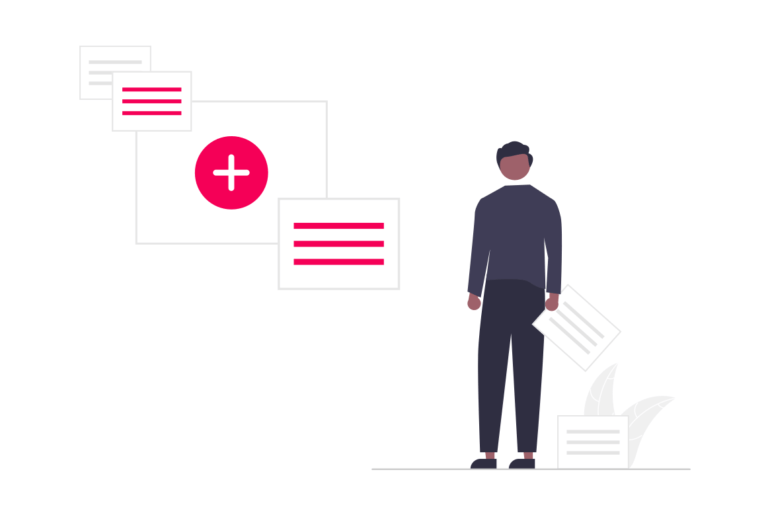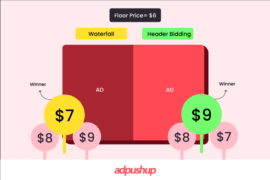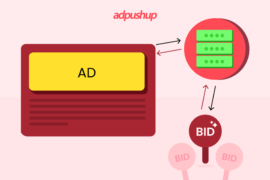Looking to learn more about waterfall ads? They are the type of ad mediation strategy mobile app developers use to maximize their ad revenue. Learn more in this post.
Waterfall ads are called such because they are designed to “cascade” or “waterfall” through a series of ad networks until a suitable ad is displayed to the user. Waterfall ads work by sequentially requesting ads from a list of ad networks, and once a network responds with a suitable ad, it is displayed to the user.
Waterfall ads offer several benefits to mobile app developers and marketers, including monetizing their apps, increasing ad revenue, and improving user engagement. With waterfall ads, developers and marketers can easily manage multiple ad networks and optimize their ad inventory to maximize their earnings.
Moreover, waterfall ads provide an efficient and effective way for developers and marketers to reach their target audience. They can display relevant ads to users based on their demographics, interests, and behaviors.
Technical Details of Waterfall Ads
To better understand how waterfall ads work, diving into the technical details of how they are implemented in mobile apps and websites is essential. Here are the key technical details of waterfall ads:
Implementation
Waterfall ads are typically implemented in mobile apps and websites using ad mediation software development kits (SDKs) or server-to-server (S2S) integrations. The ad mediation SDKs allow developers to integrate multiple ad networks into their apps and websites.
In contrast, the S2S integration allows them to make ad requests and receive ad responses from multiple ad networks through a central server.
Prioritization
When an ad request is made, the ad mediation SDK or server sends the request to the first ad network in the waterfall list.
If that network doesn’t respond within a set time limit, the request is passed to the following network in the list, and so on, until a network responds with a suitable ad or the waterfall list is exhausted.
The prioritization of the ad networks in the waterfall list can be based on factors such as eCPM (effective cost per thousand impressions), fill rate, and ad quality.
Ad Requests and Responses
When an ad request is made, it includes information about the user, such as their device type, location, and interests.
The ad network then sends an ad response that includes details about the ad, such as its size, format, and targeting criteria. If the ad response meets the criteria set by the developer or marketer, the ad is displayed to the user.
Ad Format and Targeting
Waterfall ads can support a variety of ad formats, such as banner ads, interstitial ads, video ads, and native ads. The targeting criteria can be based on various factors, including the user’s demographics, interests, behaviors, and location.
Reporting and Analytics
Waterfall ads typically provide reporting and analytics features that allow developers and marketers to track their ad performance, such as impressions, clicks, and revenue. They can use this data to optimize their ad inventory and maximize their earnings.
Waterfall ads work by sequentially requesting ads from a list of ad networks and displaying the first suitable ad to the user.
They are implemented using ad mediation SDKs or S2S integrations and prioritize ad networks based on eCPM, fill rate, and ad quality.
Waterfall ads support a variety of ad formats and targeting criteria and provide reporting and analytics features to help developers and marketers optimize their ad inventory.
Also Learn: Header Bidding vs. Waterfall: Which One is the Best for Ad Serving?
Best Practices and Optimization Tips for Waterfall Ads
Optimizing waterfall ads can help maximize your ad revenue and improve user engagement. Here are some best practices and tips for optimizing waterfall ads:
Choose the Right Ad Networks
The success of your waterfall ads depends on the quality of your ad networks. Researching and evaluating ad networks based on their eCPM, fill rate, ad quality, and reputation is essential.
Set up the Mediation Stack
The mediation stack is the order in which ad networks are listed in the waterfall. It’s essential to set up the mediation stack based on the ad network’s performance so that the best-performing network is at the top of the list. You can also experiment with different mediation stack configurations to find the optimal combination for your app or website.
Optimize Ad Targeting and Placement
Ad targeting and placement can significantly impact the effectiveness of your waterfall ads. Targeting ads based on the user’s demographics, interests, and behaviors is essential, as placing them in a way that maximizes their visibility and engagement.
Use Ad Refresh and Frequency Capping
Ad refresh allows you to refresh the ad inventory periodically to show new ads to the user. In contrast, frequency capping ensures the user sees the same ad sparingly. Both ad refresh and frequency capping can help you increase ad revenue and improve user experience.
Monitor and Analyze Ad Performance
It’s essential to monitor and analyze the performance of your waterfall ads using reporting and analytics features provided by the ad mediation platform.
It can help you identify areas that need improvement and optimize your ad inventory accordingly.
Optimizing waterfall ads requires careful consideration of ad network selection, mediation stack configuration, ad targeting, and placement, ad refresh and frequency capping, and ad performance monitoring and analysis.
Following these best practices and tips can maximize your ad revenue and improve user engagement.
Use Cases and Examples of Waterfall Ads
Waterfall ads have been used successfully in various industries and use cases to increase ad revenue and improve user engagement. Here are some real-world examples of how waterfall ads have been implemented successfully:
Mobile Gaming
A mobile gaming company implemented waterfall ads in their game to monetize their app. They used an ad mediation platform to manage multiple ad networks and optimize their ad inventory. By using waterfall ads, they increased their ad revenue by 50% and improved user engagement.
E-commerce
An e-commerce app implemented waterfall ads to promote relevant products to their users. They used ad targeting based on the user’s search history and purchase behavior to display ads for similar products. By using waterfall ads, they increased their conversion rate by 25% and improved their return on ad spend.
News and Media
A news and media app implemented waterfall ads to monetize its app and increase user engagement. They used ad refresh and frequency capping to show users new ads and prevent them from seeing the same ad too often. By using waterfall ads, they increased their ad revenue by 35% and improved user retention.
Finance
A finance app implemented waterfall ads to promote relevant financial products to their users. They used ad targeting based on the user’s financial profile and investment goals to display ads for relevant financial products. By using waterfall ads, they increased their click-through rate by 40% and improved their user acquisition.
Waterfall ads have been used successfully in various industries and use cases to increase ad revenue, improve user engagement, and promote relevant products to users.
Conclusion
Waterfall ads are a powerful ad mediation strategy to help mobile app developers and marketers maximize ad revenue and improve user engagement.
By implementing waterfall ads in your mobile app or website, you can leverage their benefits to enhance ad revenue and user engagement.
Waterfall ads are implemented using ad mediation SDKs or S2S integrations, prioritizing ad networks based on performance.
Best practices for optimizing waterfall ads include:
- Choosing the right ad networks.
- Setting up the mediation stack.
- Optimizing ad targeting and placement.
- Using ad refresh and frequency capping.
- Monitoring and analyzing ad performance.
Real-world examples have shown that waterfall ads can be successful in various industries and use cases, including mobile gaming, e-commerce, news and media, and finance.
FAQ
Waterfall Ads are a type of ad mediation technique used to optimize the fill rates and eCPMs of mobile app ad inventory.
In Waterfall Ads, ad networks are stacked in a “waterfall” formation, with the highest eCPM network at the top and the lowest eCPM network at the bottom. When an ad request is made, the first network is given a chance to fill it. If it can’t fill the request, the second network is given a chance, and so on down the waterfall until the request is filled.
The main advantage of using Waterfall Ads is that it allows app developers to maximize their ad revenue by filling as many ad requests as possible with the highest-paying ads. It also allows for more flexibility in managing ad networks and optimizing revenue.
Waterfall Ads can be optimized by regularly reviewing and adjusting the order of the ad networks in the waterfall to ensure that the highest-paying networks are given the best chance to fill requests. It’s also important to monitor and analyze performance data to make informed decisions about which networks to include in the waterfall and how to prioritize them.

Shubham is a digital marketer with rich experience working in the advertisement technology industry. He has vast experience in the programmatic industry, driving business strategy and scaling functions including but not limited to growth and marketing, Operations, process optimization, and Sales.







